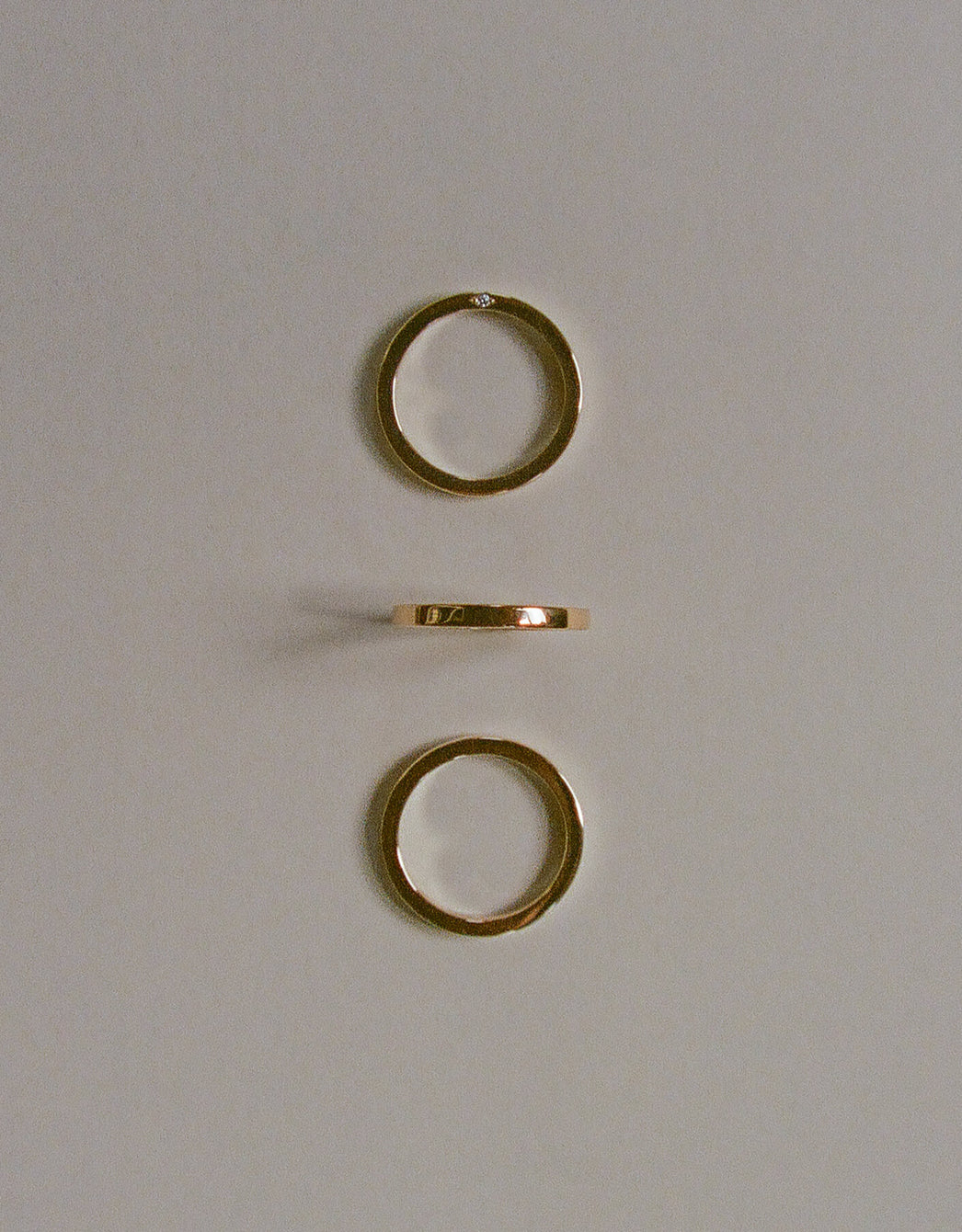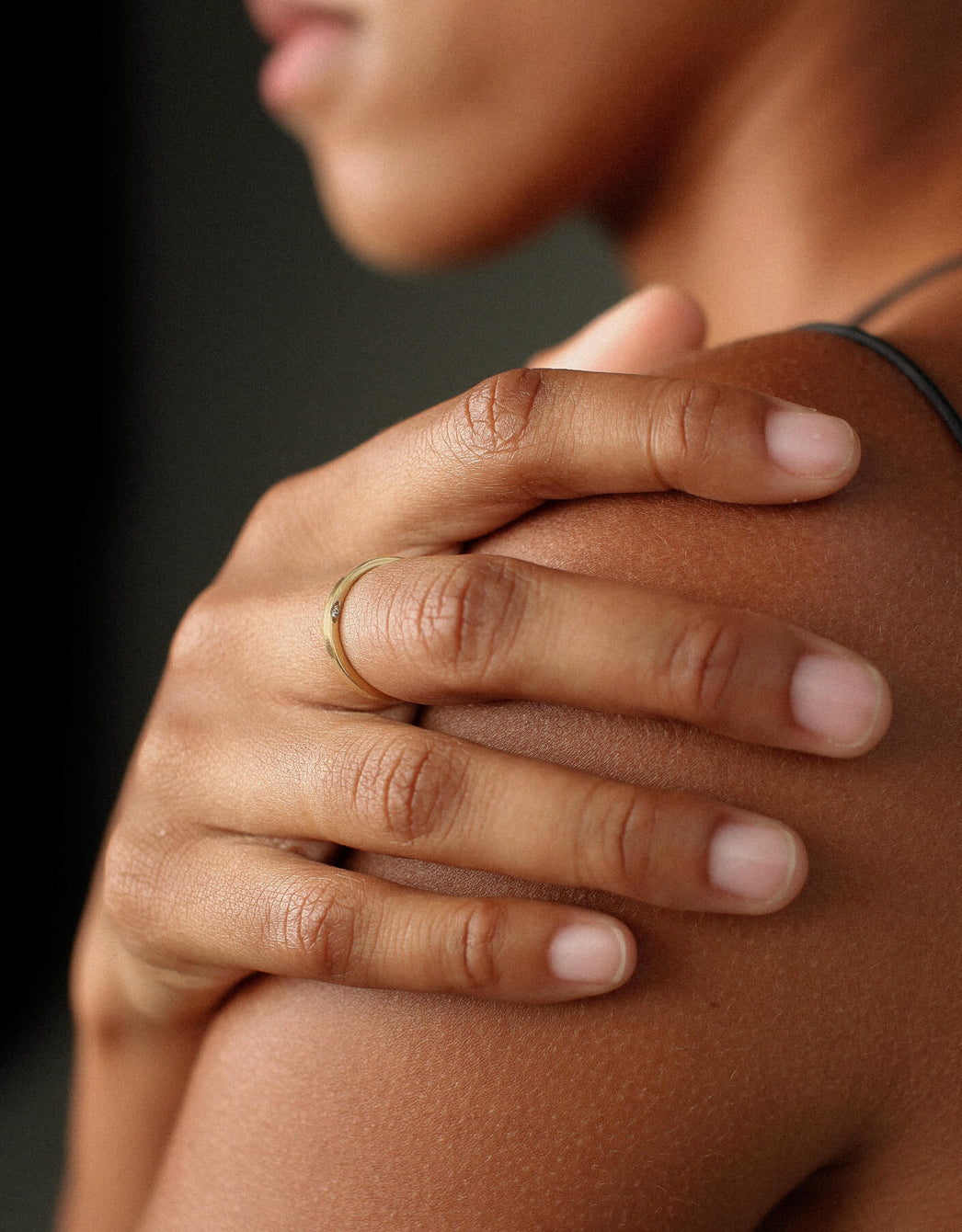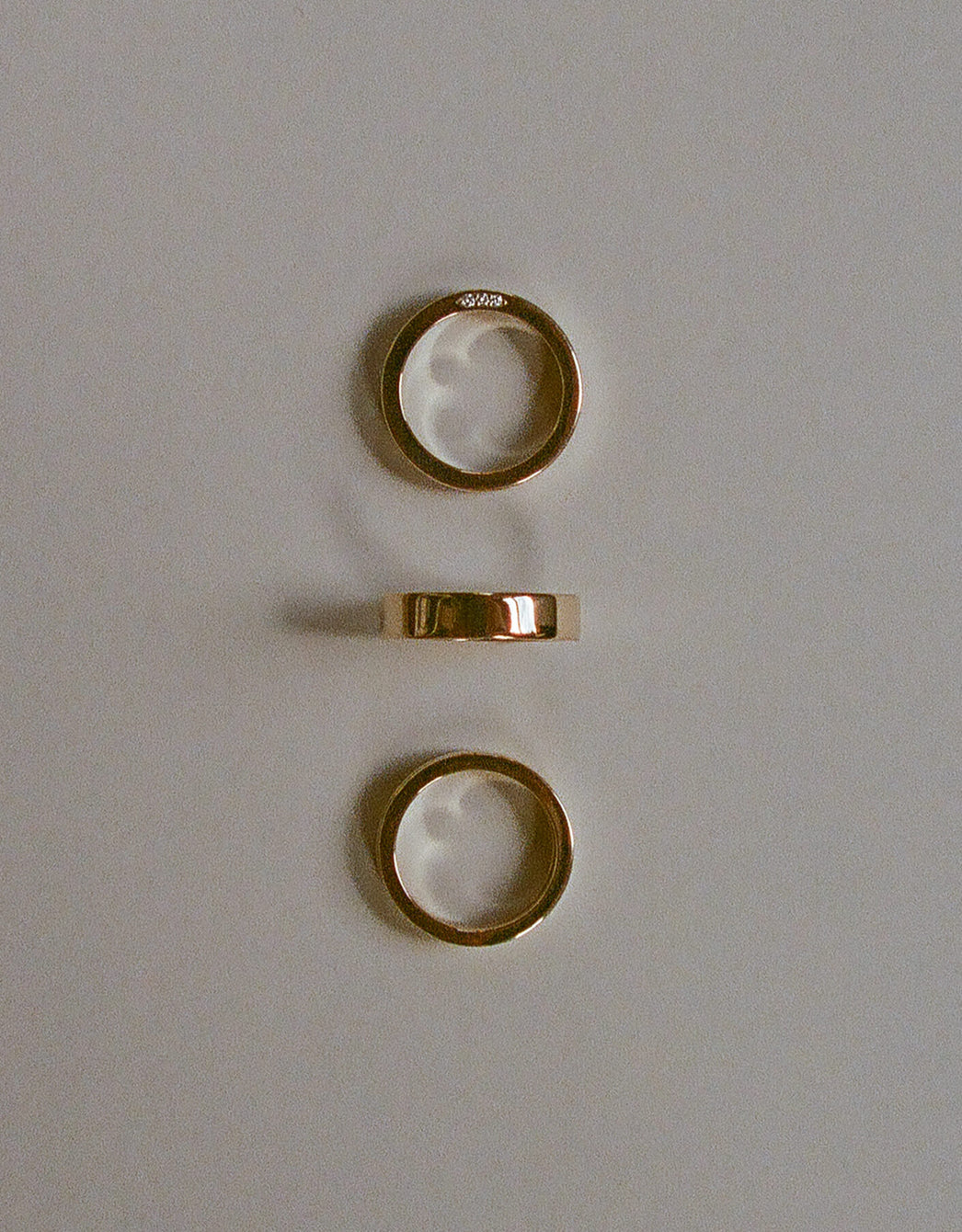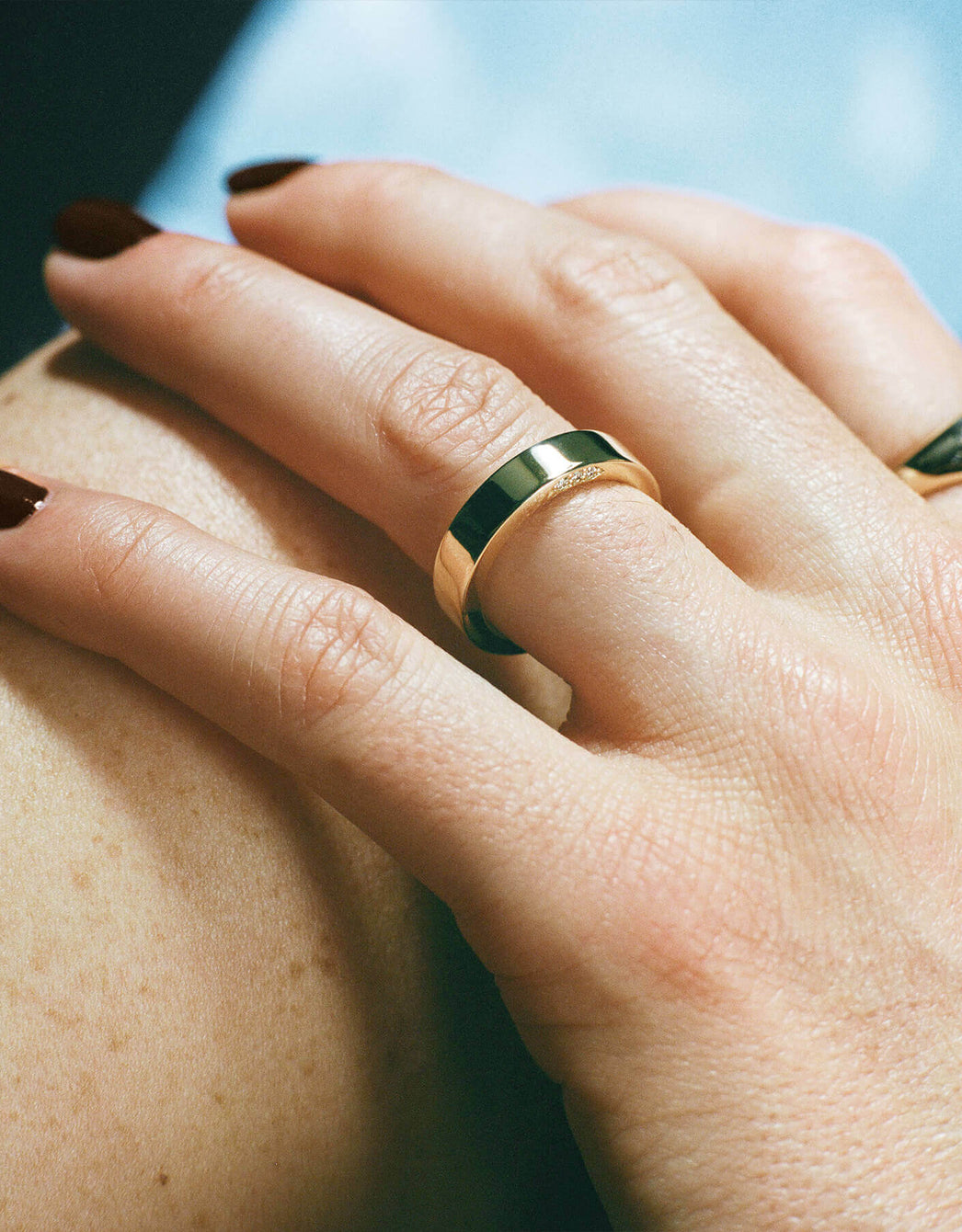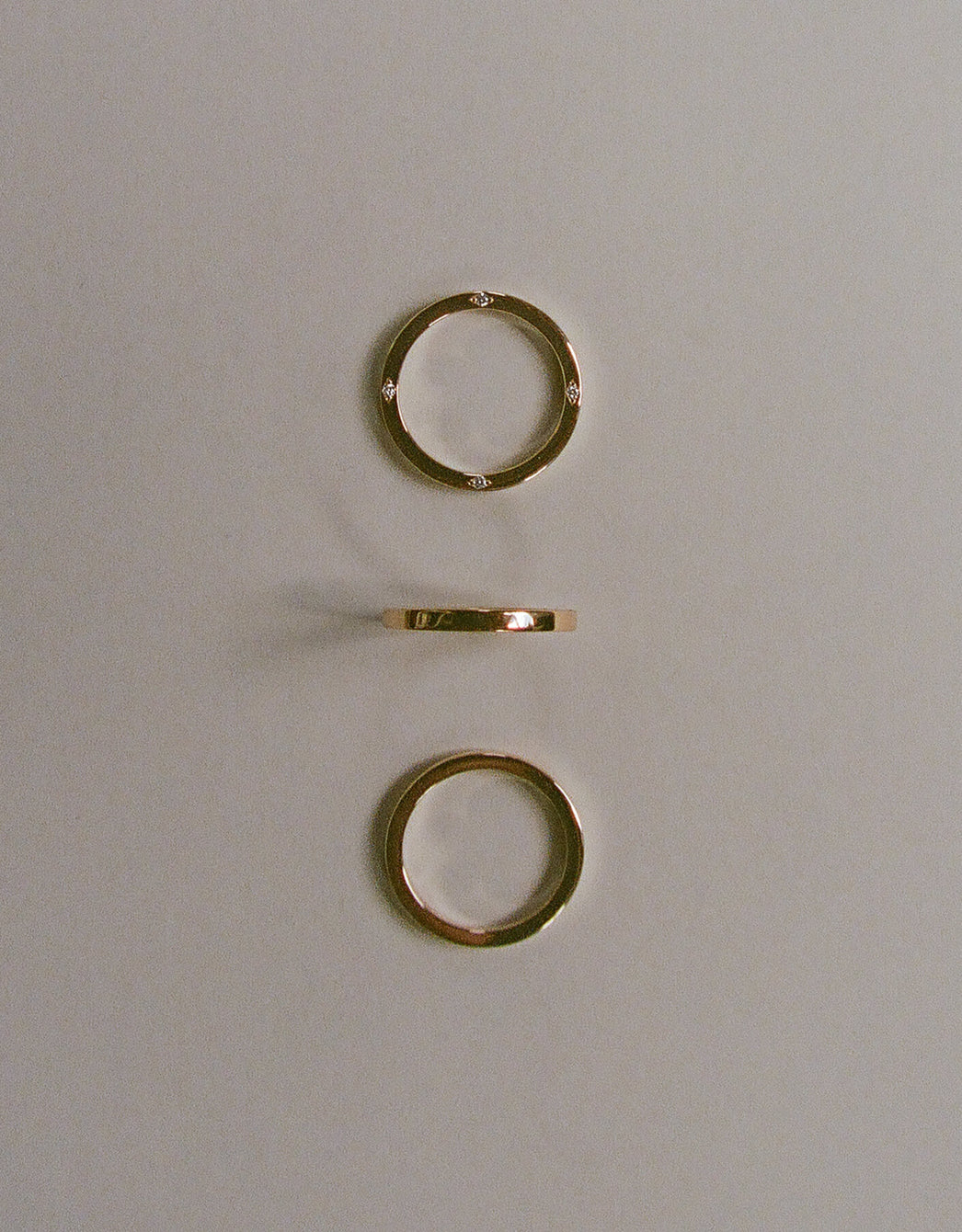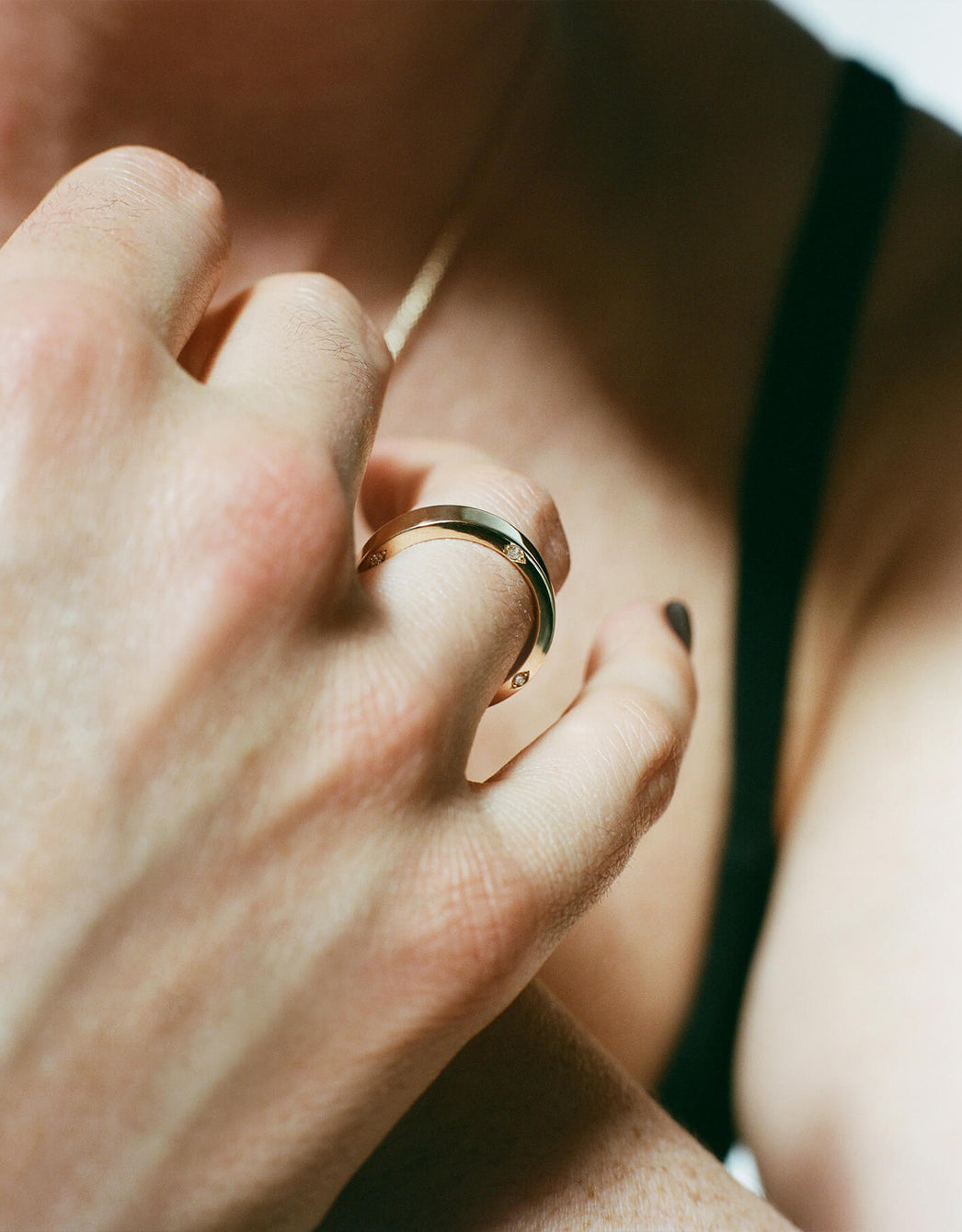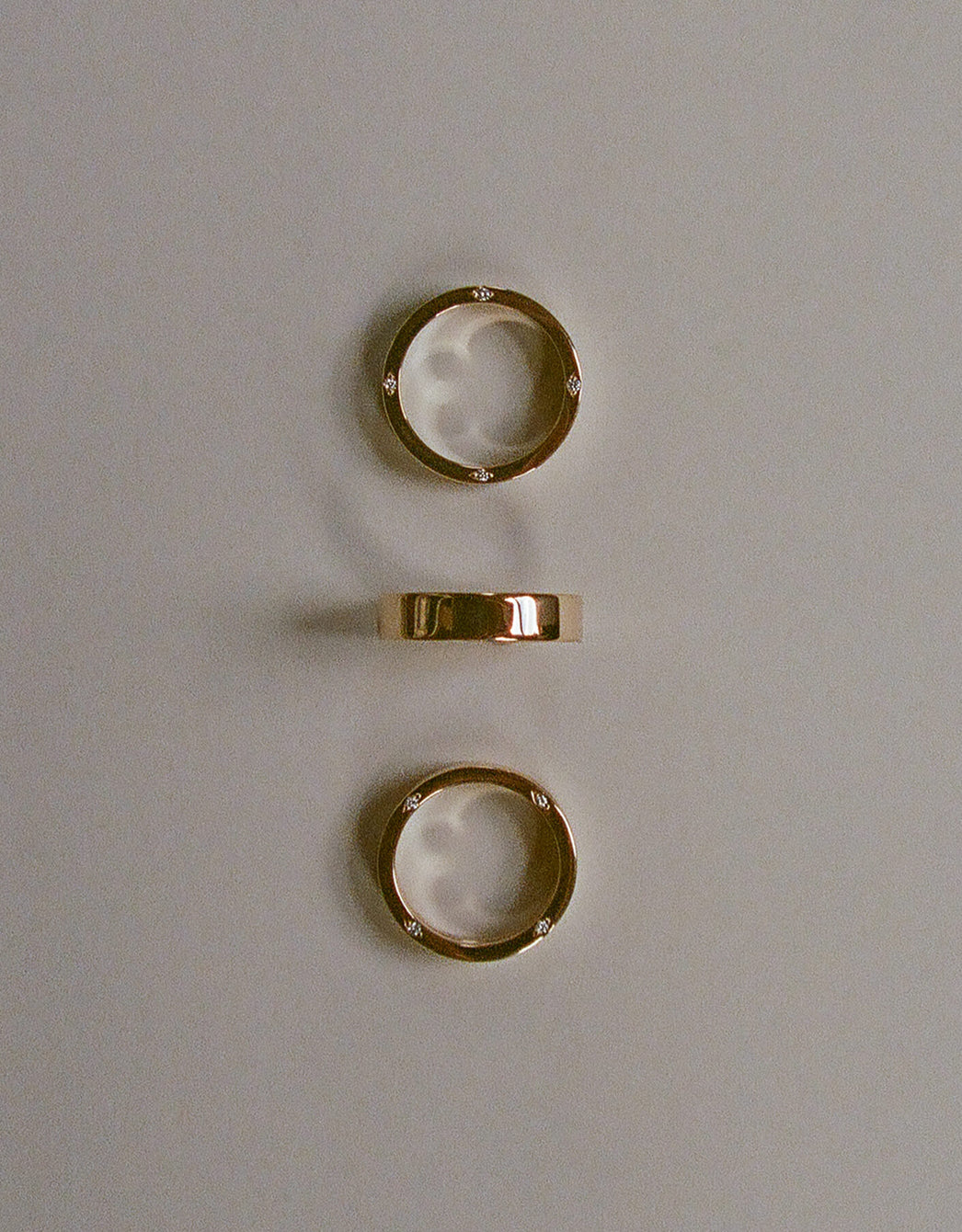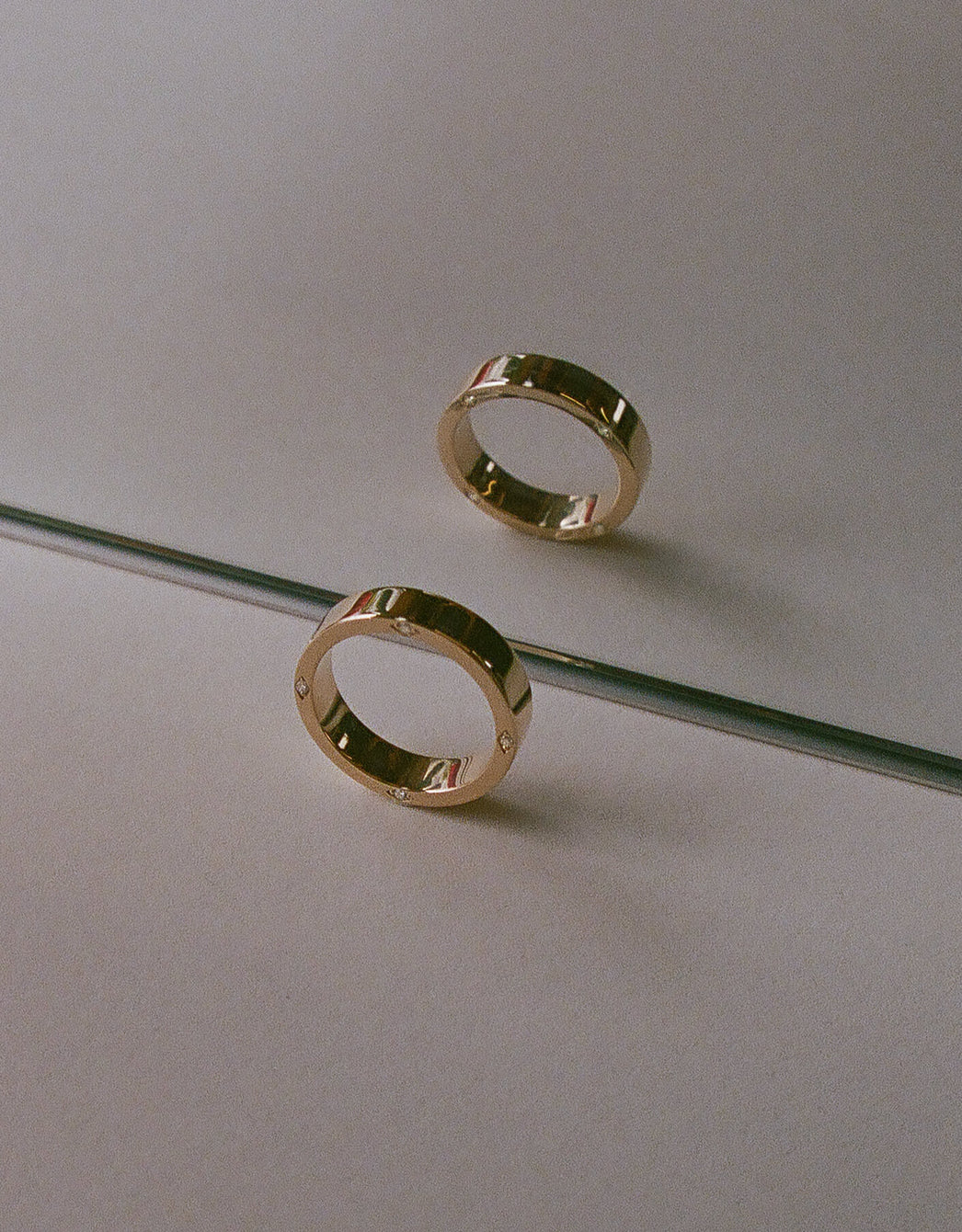Reclaiming Diamonds: Why Abel Uses Recycled Diamonds
I have a LOT of thoughts on diamonds. While I won’t be getting into all of my hot takes on the wedding industry’s favorite stone here, I do want to talk about my decision to exclusively use recycled diamonds at Abel.
—
In the jewelry industry, diamonds typically fall into three categories: newly-mined diamonds, lab-grown diamonds, and recycled diamonds. Each have their own pros and cons and come with their own set of implications for the planet and its people. I’ll do my best to break them down as succinctly as possible (though I’ll inevitably leave something out — this topic is incredibly nuanced and complex!):
NEWLY-MINED DIAMONDS

Newly-mined diamonds are exactly what they sound like — natural diamonds that are extracted from the earth through mining processes. At this point most people are familiar with the negative environmental and social consequences of diamond mining: the disruption of ecosystems, displacement of communities, deforestation and pollution, and of course, historically rampant human rights and labor violations.
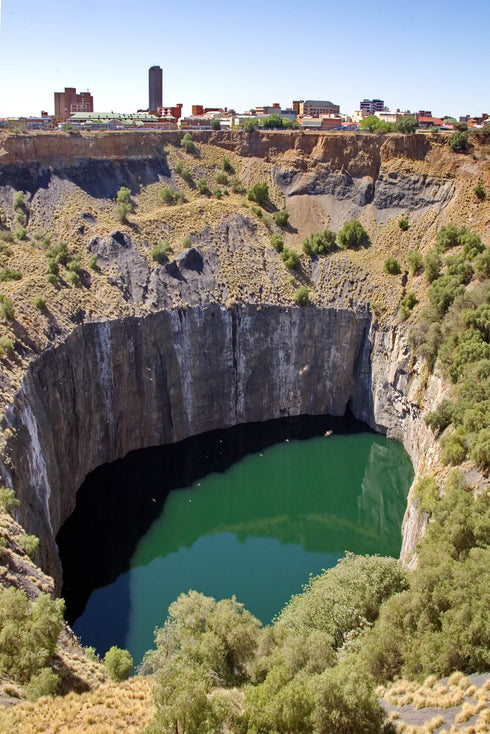
What some people might not realize, however, is that a lot of places that claim to have “conflict-free” diamonds are using a very narrow definition of that term and — either knowingly or unknowingly — misleading consumers. For example, Kimberley Process stones have become a blanket term for clean diamonds. If you look up, however, their actual definition of a “conflict diamond” it reads, “rough diamonds sold by rebel groups or their allies to fund conflict against legitimate governments.” [1]
Without getting too into the nitty gritty, you can see two standout issues right off the bat: 1. they refer only to rough diamonds, neglecting an entire part of the supply chain (cutting and polishing process), and 2. they only include diamonds associated with rebel movements. This is an incredibly narrow definition — just because a mining operation doesn't fund militias, that doesn’t deem it free from all of the other kinds of environmental and social conflict.
LAB-GROWN DIAMONDS
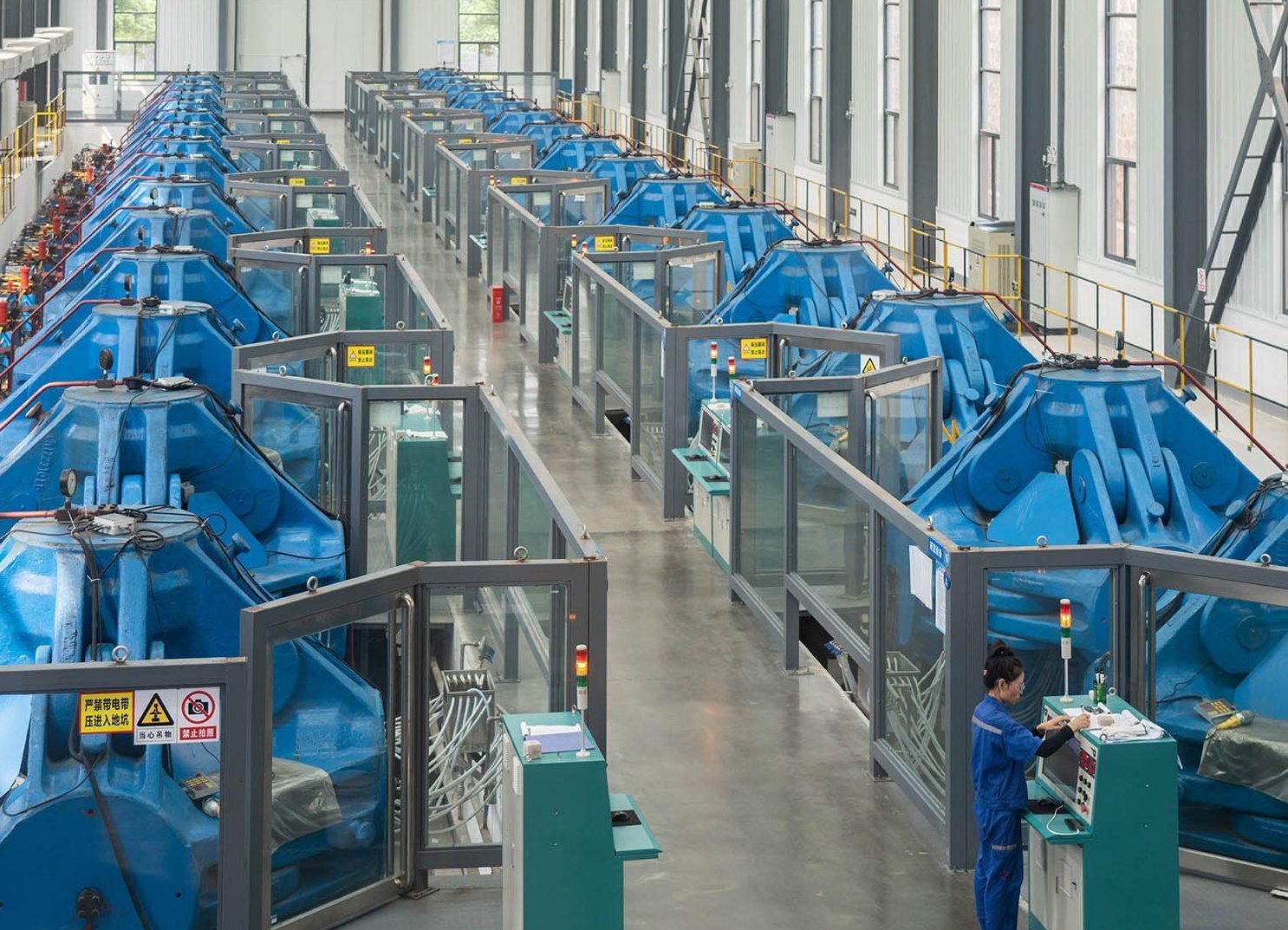
Lab-grown diamonds, which continue to rise in popularity, are created in controlled environments using either high pressure/high temperature (HPHT) or chemical vapor deposition (CVD). Synthetic diamonds are chemically and physically identical to a natural diamond, and offer a more accessible price tag.
While they are certainly more environmentally friendly and free of the social conflicts associated with natural diamonds, the production of lab-grown diamonds is still significantly energy-intensive. A conservative estimate is that producing one carat of diamond in a lab uses about the same amount of electricity as an average U.S. household over 8.7 days. Additionally, most of this production is happening in countries primarily powered by coal [2].
Technology, however, is always improving (as it does) — so who knows what the future holds for lab-grown diamonds?
RECLAIMED DIAMONDS

For Abel, I’ve made the conscious decision to exclusively use reclaimed natural diamonds. Reclaimed diamonds, also known as recycled or estate diamonds, are stones that have been recovered from across the jewelry industry — mostly from previously-worn or antique jewelry, pawn shops, and estate sales. If needed, the diamonds we use are reprocessed and cut to GIA standards in a facility that has proper safety and labor policies in place.
We have already taken so many diamonds from the earth, and I am not yet convinced that creating new ones is the best solution. There are so many beautiful stones already in circulation, and by giving them new life we can greatly reduce our environmental and social impact — and contribute to positive change within the jewelry industry.
—
To be clear — I’m not saying my stance on diamonds is the definitively correct approach. Other creators and consumers might come to different conclusions, and everyone has their own preferences and priorities when it comes to these types of things. At the end of the day, jewelry is deeply personal.
What I think is most crucial is that we all have access to information that allows us to make informed and thoughtful decisions, which is why I always strive to be transparent with my research and thought process. I hope it can help you come to your own conclusions.
I made the choice to use reclaimed diamonds because I believe it most closely aligns with Abel’s values of creating with a conscience, creating a positive impact, and caring for our world and the people who live in it.
They say every diamond tells a story — I think it’s up to us to ensure it’s a story we can be proud of.
[1] U.S. Department of State, "Conflict Diamonds and the Kimberley Process," accessed 5 Apr. 2024, https://www.state.gov/conflict-diamonds-and-the-kimberley-process/#:~:text=The Kimberley Process (KP) is,to fund conflict against legitimate.
[2] JCK Online, “Just How Eco-Friendly Are Lab-Created Diamonds?” accessed 5 Apr. 2024, https://www.jckonline.com/editorial-article/lab-created-diamonds-eco-friendly/.
